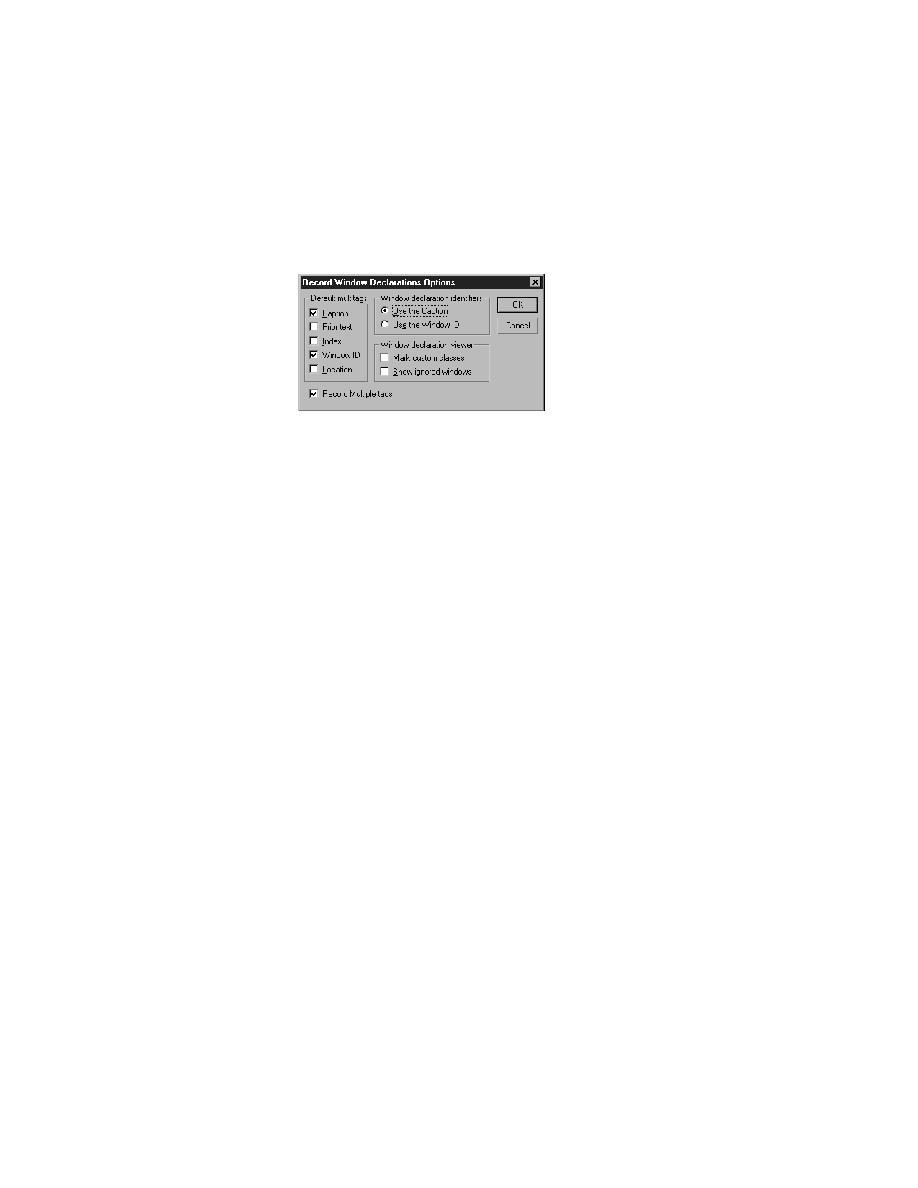
<< Test Frame - What happens by default | Test Frame - How SilkTest uses multiple tags at runtime >>
Test Frame - Using class-specific multiple tags
<< Test Frame - What happens by default | Test Frame - How SilkTest uses multiple tags at runtime >>
as appropriate.
types you selected by default. You can always override the defaults for a
particular object.
multiple tags
example, maybe you don't want window ID used with a particular class, even
though you want window ID used with all other classes. You can specify this
by including a setting statement in the declaration for the class.
have a caption or if the
caption is not unique
appends the object's index number to the tag. The index number is the
object's order of appearance in relation to other sibling objects of the
same class, from top left to bottom right within the parent object.
nearest the top left of the dialog is Find[1] and the tag of the one nearest
the bottom right of the dialog is Find[2].
number.
closest to the upper left corner of the dialog has the tag #1, and the other
has the tag #2.